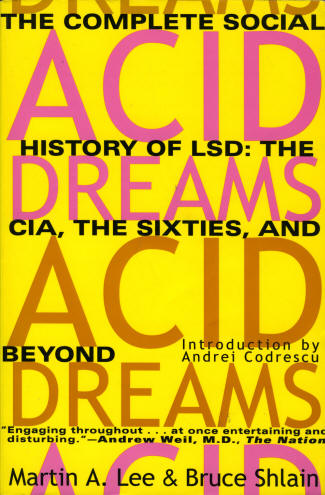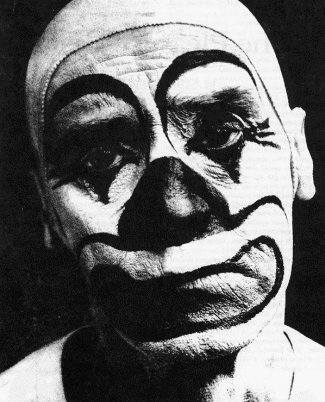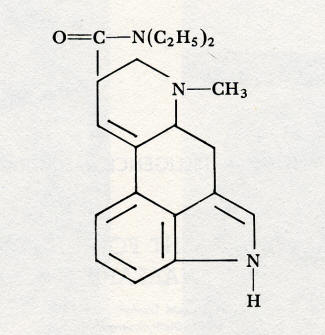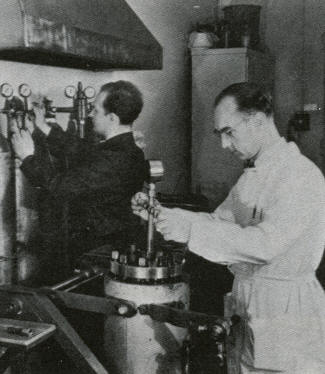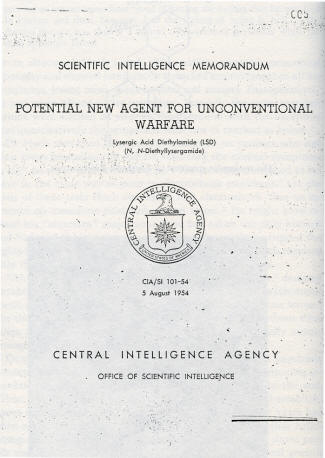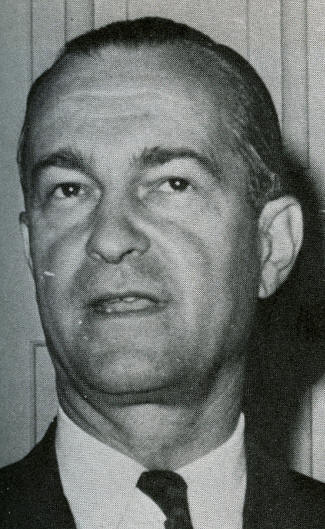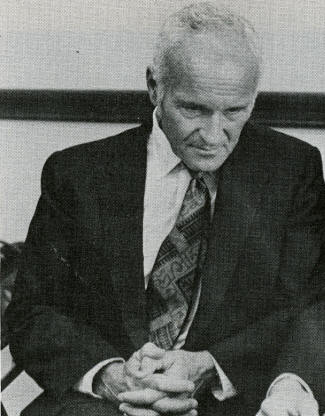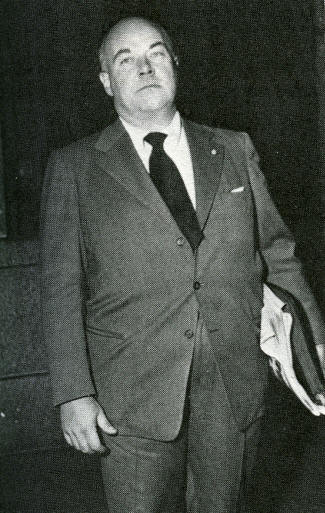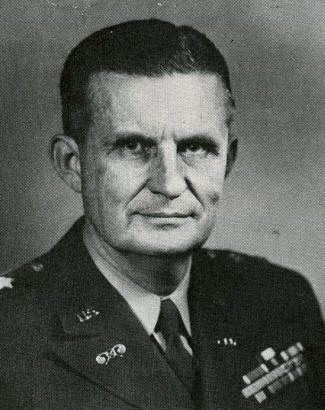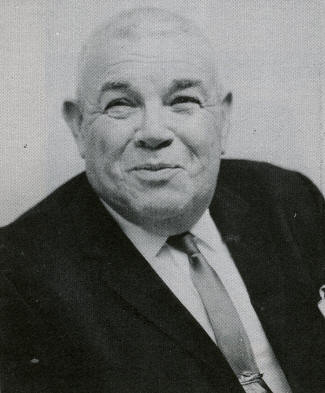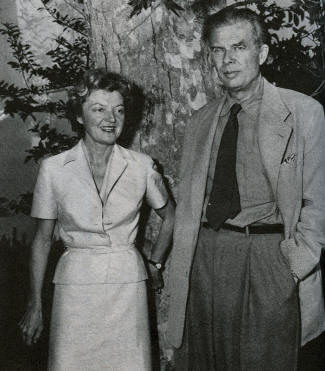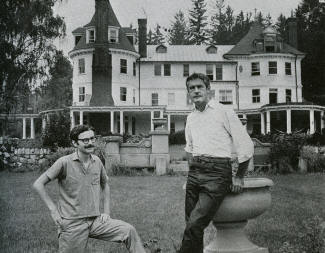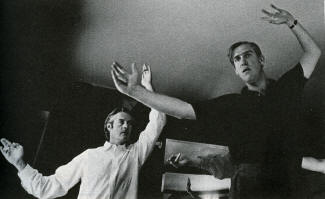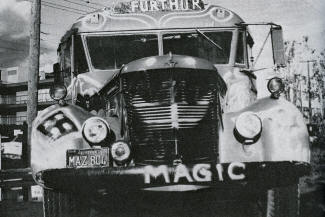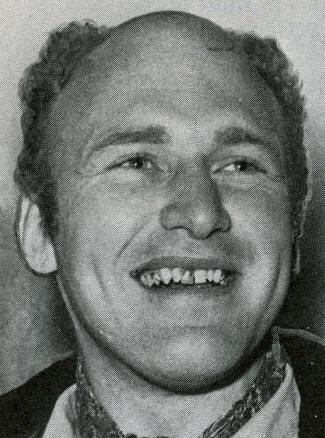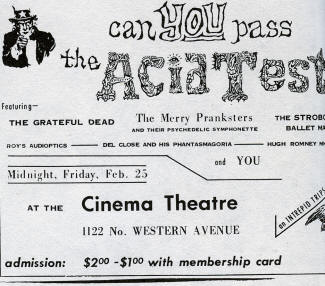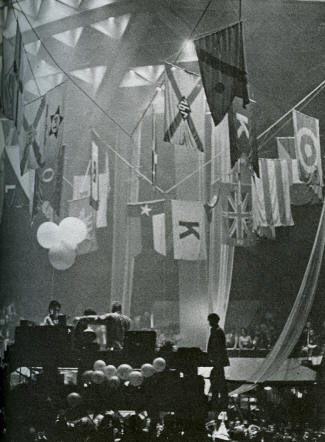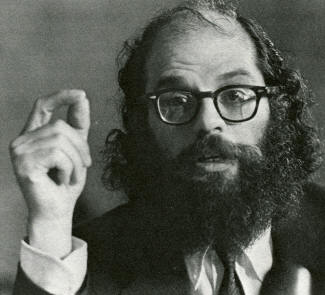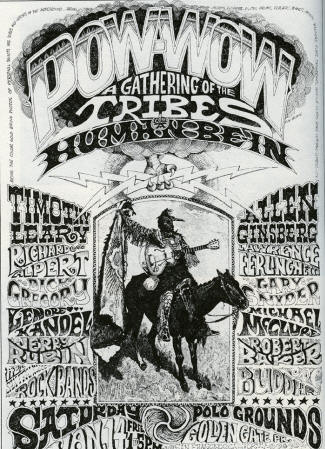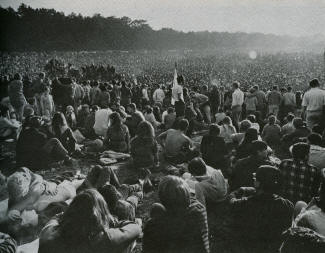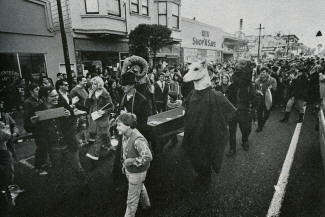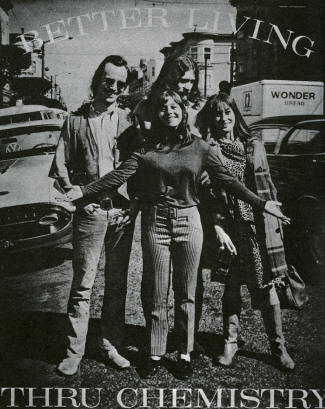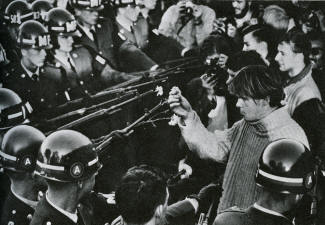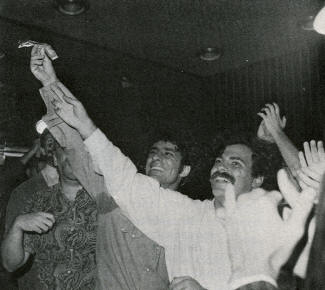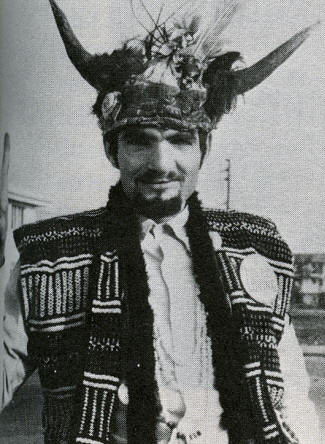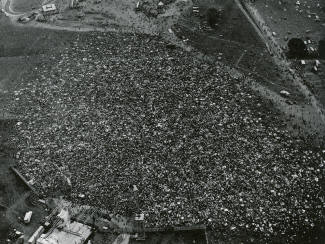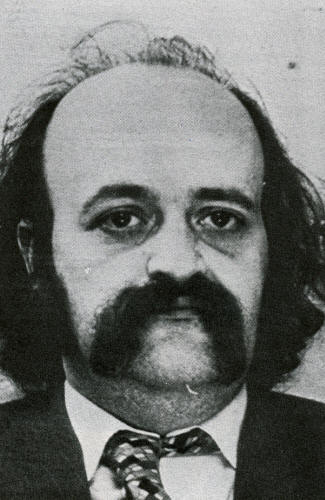 by admin » Sun Jun 14, 2015 10:21 pm
by admin » Sun Jun 14, 2015 10:21 pm
In The Beginning There Was Madness
The Truth Seekers
In the spring of 1942 General William "Wild Bill" Donovan, chief of the Office of Strategic Services (OSS), the CIA's wartime predecessor, assembled a half-dozen prestigious American scientists and asked them to undertake a top-secret research program. Their mission, Donovan explained, was to develop a speech-inducing drug for use in intelligence interrogations. He insisted that the need for such a weapon was so acute as to warrant any and every attempt to find it.
The use of drugs by secret agents had long been a part of cloak-and-dagger folklore, but this would be the first concerted attempt on the part of an American espionage organization to modify human behavior through chemical means. "We were not afraid to try things that had never been done before," asserted Donovan, who was known for his freewheeling and unconventional approach to the spy trade. The OSS chief pressed his associates to come up with a substance that could break down the psychological defenses of enemy spies and POWs, thereby causing an uninhibited disclosure of classified information. Such a drug would also be useful for screening OSS personnel in order to identify German sympathizers, double agents, and potential misfits.
Dr. Windfred Overhulser, superintendent of Saint Elizabeth's Hospital in Washington, DC, was appointed chairman of the research committee. Other members included Dr. Edward Strecker, then president of the American Psychiatric Association, and Harry J. Anslinger, head of the Federal Bureau of Narcotics. The committee surveyed and rejected numerous drugs, including alcohol, barbiturates, and caffeine. Peyote and scopolamine were also tested, but the visions produced by these substances interfered with the interrogation process. Eventually marijuana was chosen as the most likely candidate for a speech-inducing agent.
OSS scientists created a highly potent extract of cannabis, and through a process known as esterification a clear and viscous liquid was obtained. The final product had no color, odor, or taste. It would be nearly impossible to detect when administered surreptitiously, which is exactly what the spies intended to do. "There is no reason to believe that any other nation or group is familiar with the preparation of this particular drug," stated a once classified OSS document. Henceforth the OSS referred to the marijuana extract as "TD" -- a rather transparent cover for "Truth Drug."
Various ways of administering TD were tried on witting and unwitting subjects. OSS operatives found that the medicated goo could "be injected into any type of food, such as mashed potatoes, butter, salad dressing, or in such things as candy." Another scheme relied on using facial tissues impregnated with the drug. But these methods had their drawbacks. What if someone had a particularly ravenous appetite? Too much TD could knock a subject out and render him useless for interrogation. The OSS eventually determined that the best approach involved the use of a hypodermic syringe to inject a diluted TD solution into a cigarette or cigar. After smoking such an item, the subject would get suitably stoned, at which point a skillful interrogator would move in and try to get him to spill the beans.
The effects of TD were described in an OSS report: "TD appears to relax all inhibitions and to deaden the areas of the brain which govern an individual's discretion and caution. It accentuates the senses and makes manifest any strong characteristics of the individual. Sexual inhibitions are lowered, and the sense of humor is accentuated to the point where any statement or situation can become extremely funny to the subject. On the other hand, a person's unpleasant characteristics may also be heightened. It may be stated that, generally speaking, the reaction will be one of great loquacity and hilarity." [1]
After testing TD on themselves, their associates, and US military personnel, OSS agents utilized the drug operationally, although on a limited basis. The results were mixed. In certain instances TD subjects felt a driving necessity "to discuss psychologically charged topics. Whatever the individual is trying to withhold will be forced to the top of his subconscious mind." But there were also those who experienced "toxic reactions" -- better known in latter-day lingo as "bummers." One unwitting doper became irritable and threatening and complained of feeling like he was "two different people." The peculiar nature of his symptoms precluded any attempt to question him.
That was how it went, from one extreme to the other. At times TD seemed to stimulate "a rush of talk," on other occasions people got paranoid and didn't say a word. The lack of consistency proved to be a major stumbling block, and "Donovan's dreamers," as his enthusiastic OSS staffers have been called, reluctantly weaned themselves from their reefer madness. A handwritten comment in the margins of an OSS document summed up their stoned escapades: "The drug defies all but the most expert and searching analysis, and for all practical purposes can be considered beyond analysis."
After the war, the CIA and the military picked up where the OSS had left off in the secret search for a truth serum. The navy took the lead when it initiated Project CHATTER in 1947, the same year the CIA was formed. Described as an "offensive" program, CHATTER was supposed to devise means of obtaining information from people independent of their volition but without physical duress. Toward this end, Dr. Charles Savage conducted experiments with mescaline (a semi-synthetic extract of the peyote cactus that produces hallucinations similar to those caused by LSD) at the Naval Medical Research Institute in Bethesda, Maryland. But these studies, which involved animal as well as human subjects, did not yield an effective truth serum, and CHATTER was terminated in 1953.
The navy became interested in mescaline as an interrogation agent when American investigators learned of mind control experiments carried out by Nazi doctors at the Dachau concentration camp during World War II. After administering the hallucinogen to thirty prisoners, the Nazis concluded that it was "impossible to impose one's will on another person as in hypnosis even when the strongest dose of mescaline had been given." But the drug still afforded certain advantages to SS interrogators, who were consistently able to draw "even the most intimate secrets from the [subject] when questions were cleverly put." Not surprisingly, "sentiments of hatred and revenge were exposed in every case."
The mescaline experiments at Dachau were described in a lengthy report by the US Naval Technical Mission, which swept across Europe in search of every scrap of industrial material and scientific data that could be garnered from the fallen Reich. This mission set the stage for the wholesale importation of more than six hundred top Nazi scientists under the auspices of Project Paperclip, which the CIA supervised during the early years of the Cold War. Among those who emigrated to the US in such a fashion was Dr. Hubertus Strughold, the German scientist whose chief subordinates (Dr. Sigmund Ruff and Dr. Sigmund Rascher) were directly involved in "aviation medicine" experiments at Dachau, which included the mescaline studies. [2] Despite recurring allegations that he sanctioned medical atrocities during the war, Strughold settled in Texas and became an important figure in America's space program. After Wernher von Braun, he was the top Nazi scientist employed by the American government, and he was subsequently hailed by NASA as the "father of space medicine."
The CIA, meanwhile, had launched an intensive research effort geared toward developing "special" interrogation techniques. Two methods showed promise in the late 1940s. The first involved narcohypnosis, in which a CIA psychiatrist attempted to induce a trance state after administering a mild sedative. A second technique involved a combination of two different drugs with contradictory effects. A heavy dose of barbiturates was given to knock the subject out, and then he received an injection of a stimulant, usually some type of amphetamine. As he started to come out of a somnambulant state, he would reach a certain ineffable point prior to becoming fully conscious. Described in CIA documents as "the twilight zone," this groggy condition was considered optimal for interrogation.
CIA doctors attempted to extend the stuporous limbo as long as possible. In order to maintain the delicate balance between consciousness and unconsciousness, an intravenous hookup was inserted in both the subject's arms. One set of works contained a downer, the other an upper (the classic "goofball effect"); with a mere flick of the finger an interrogator could regulate the flow of chemicals. The idea was to produce a "push" -- a sudden outpouring of thoughts, emotions, confidences, and whatnot. Along this line various combinations were tested: Seconal and Dexedrine, Pentothal and Desoxyn, and depending on the whim of the spy in charge, some marijuana (the old OSS stand-by, which the CIA referred to as "sugar") might be thrown in for good measure.
The goofball approach was not a precision science. There were no strictly prescribed rules or operating procedures regarding what drugs should be employed in a given situation. The CIA interrogators were left to their own devices, and a certain degree of recklessness was perhaps inevitable. In one case, a group of CIA experts hastily drafted a memo after reviewing a report prepared by one of the Agency's special interrogation teams. The medical consultants pointed out that "the amounts of scopolamine administered were extremely heavy." They also noted that the best results were obtained when two or at most three different chemicals were used in a session. In this case, however, heavy dosages of scopolamine were administered along with thiamine, sodium luminal, atropine sulfate, sodium pentothal and caffeine sulfate. One of the CIA's professional consultants in "H" techniques also questioned why hypnosis was attempted "after a long and continuous use of chemicals, after the subject had vomited, and after apparently a maximum tolerance point had been reached with the chemicals." Everyone who read the interrogation report agreed that hypnosis was useless, if not impossible, under such conditions. Nevertheless, the memo concluded by reaffirming that "no criticism is intended whatsoever" and that "the choice of operating weapons" must be left to the agents in the field.
Despite the potential hazards and tenuousness of the procedure as a whole, special interrogations were strongly endorsed by Agency officials. A CIA document dated November 26, 1951, announced, "We're now convinced that we can maintain a subject in a controlled state for a much longer period of time than we heretofore had believed possible. Furthermore, we feel that by use of certain chemicals or combinations, we can, in a very high percentage of cases, produce relevant information." Although these techniques were still considered experimental, the prevailing opinion among members of the special interrogation teams was that there had been enough experiments "to justify giving the green light to operational use of the techniques." "There will be many a failure," a CIA scientist acknowledged, but he was quick to stress that "every success with this method will be pure gravy." [3]
In an effort to expand its research program the CIA contacted academics and other outside experts who specialized in areas of mutual interest. Liaison was established with the research sections of police departments and criminology laboratories; medical practitioners, professional hypnotists, and psychiatrists were brought on as paid consultants; and various branches of the military provided assistance. Oftentimes these arrangements involved a cover to conceal the CIA's interest in behavior modification. With the bureaucratic apparatus already in place, the CIA's mind control efforts were integrated into a single project under the code name BLUEBIRD. Due to the extreme sensitivity of the project, the usual channels of authorization were bypassed; instead of going through the Projects Review Committee, the proposal for BLUEBIRD was submitted directly to CIA director Roscoe Hillenkoetter, who authorized the use of unvouchered funds to finance the hush-hush undertaking. With this seal of approval, the CIA's first major drug testing program was officially hatched. BLUEBIRD was to remain a carefully guarded secret, for if word of the program leaked out it would have been a great embarrassment and a detriment to American intelligence. As one CIA document put it, BLUEBIRD material was "not fit for public consumption."
From the outset the CIA's mind control program had an explicit domestic angle. A memo dated July 13, 1951, described the Agency's mind-bending efforts as "broad and comprehensive, involving both domestic and overseas activities, and taking into consideration the programs and objectives of other departments, principally the military services." BLUEBIRD activities were designed to create an "exploitable alteration of personality" in selected individuals; specific targets included "potential agents, defectors, refugees, POWs," and a vague category of "others." A number of units within the CIA participated in this endeavor, including the Inspection and Security Staff (the forerunner of the Office of Security), which assumed overall responsibility for running the program and dispatching the special interrogation teams. Colonel Sheffield Edwards, the chairman of the BLUEBIRD steering committee, consistently pushed for a more reliable speech-inducing substance. By the time BLUEBIRD evolved into Operation ARTICHOKE (the formal change in code names occurred in August 1951), Security officials were still searching for the magic technique -- the deus ex machina -- that would guarantee surefire results.
The whole concept of a truth drug was a bit farfetched to begin with. It presupposed that there was a way to chemically bypass the mind's censor and turn the psyche inside out, unleashing a profusion of buried secrets, and that surely some approximation of "truth" would emerge amidst all the personal debris. In this respect the CIA's quest resembled a skewed version of a familiar mythological theme from which such images as the Philosopher's Stone and the Fountain of Youth derive -- that through touching or ingesting something one can acquire wisdom, immortality, or eternal peace. It is more than a bit ironic that the biblical inscription on the marble wall of the main lobby at CIA headquarters in Langley, Virginia, reads, "And ye shall know the Truth and the Truth shall set you free."
The freewheeling atmosphere that prevailed during the CIA's early years encouraged an "anything goes" attitude among researchers associated with the mind control program. This was before the Agency's bureaucratic arteries began to harden, and those who participated in Operation ARTICHOKE were intent on leaving no stone unturned in an effort to deliver the ultimate truth drug. A number of agents were sent on fact-finding missions to all corners of the globe to procure samples of rare herbs and botanicals. The results of one such trip were recorded in a heavily deleted document entitled "Exploration of Potential Plant Resources in the Caribbean Region." Among the numerous items mentioned in this report, a few were particularly intriguing. A plant called a "stupid bush," characterized by the CIA as a psychogenic agent and a pernicious weed, was said to proliferate in Puerto Rico and Saint Thomas. Its effects were shrouded in mystery. An "information bush" was also discovered. This shrub stumped CIA experts, who were at a loss to pin down its properties. The "information bush" was listed as a psychogenic agent followed by a lingering question mark. What type of information -- prophetic or mundane -- might be evoked by this unusual herb was unclear. Nor was it known whether the "information bush" could be used as an antidote to the "stupid bush" or vice versa.
The CIA studied a veritable pharmacopoeia of drugs with the hope of achieving a breakthrough. At one point during the early 1950s Uncle Sam's secret agents viewed cocaine as a potential truth serum. "Cocaine's general effects have been somewhat neglected," noted an astute researcher. Whereupon tests were conducted that enabled the CIA to determine that the precious powder "will produce elation, talkativeness, etc." when administered by injection. "Larger doses," according to a previously classified document, "may cause fearfulness and alarming hallucinations." The document goes on to report that cocaine "counteracts ... the catatonia of catatonic schizophrenics" and concludes with the recommendation that the drug be studied further.
A number of cocaine derivatives were also investigated from an interrogation standpoint. Procaine, a synthetic analogue, was tested on mental patients and the results were intriguing. When injected into the frontal lobes of the brain through trephine holes in the skull, the drug "produced free and spontaneous speech within two days in mute schizophrenics." This procedure was rejected as "too surgical for our use." Nevertheless, according to a CIA pharmacologist, "it is possible that such a drug could be gotten into the general circulation of subject without surgery, hypodermic or feeding." He suggested a method known as iontophoresis, which involves using an electric current to transfer the ions of a chosen medicament into the tissues of the body.
The CIA's infatuation with cocaine was short-lived. It may have titillated the nostrils of more than a few spies and produced some heady speculation, but after the initial inspiration it was back to square one. Perhaps their expectations were too high for any drug to accommodate. Or maybe a new approach to the problem was required.
The search for an effective interrogation technique eventually led to heroin. Not the heroin that ex-nazi pilots under CIA contract smuggled out of the Golden Triangle in Southeast Asia on CIA proprietary airlines during the late 1940s and early 1950s, nor the heroin that was pumped into America's black and brown ghettos after passing through contraband networks controlled by mobsters who moonlighted as CIA hitmen. The Agency's involvement in worldwide heroin traffic, which has been well documented in The Politics of Heroin in Southeast Asia by Alfred McCoy, went far beyond the scope of Operation ARTICHOKE, which was primarily concerned with eliciting information from recalcitrant subjects. However, ARTICHOKE scientists did see possible advantages in heroin as a mind control drug. According to a CIA document dated April 26, 1952, heroin was "frequently used by police and intelligence officers on a routine basis [emphasis added]." The cold turkey theory of interrogation: CIA operatives determined that heroin and other habit-forming substances "can be useful in reverse because of the stresses produced when they are withdrawn from those who are addicted to their use."
_______________
Notes:
1. This was a rather mild and playful assessment of the effects of marijuana compared to the public rantings of Harry Anslinger, the narcotics chief who orchestrated an unrelenting media campaign against "the killer weed."
2. Strughold's subordinates injected Dachau inmates with gasoline, crushed them to death in high-altitude pressure chambers, shot them so that potential blood coagulants could be tested on their wounds, forced them to stand naked in subfreezing temperatures or immersed them in tubs of ice water to see how long it would take before they died. As Charles R. Allen, Jr., author of From Hitler to Uncle Sam: How American Intelligence Used Nazi War Criminals, stated in an article on Strughold, "There was a clear pattern to the various experiments with poison, gas, deliberate infestation of victims with malaria, typhus and other virulencies causing instant or prolonged anguishing to death. Whether the tests concerned high-altitude, freezing or the potability of sea water; or the shooting of 'volunteers' with gas bullets -- the patent purpose of the entire body of tests conducted at Dachau was to enhance the effectiveness of Hitler's criminal warfare against humanity."
After the war an Allied tribunal convened at Nuremberg sentenced a number of Nazi doctors to death for their role in medical atrocities at Dachau and other concentration camps. The judges at Nuremberg subsequently put forward a code of ethics for scientific research, which stipulated that full voluntary consent must be obtained from all research subjects and experiments should yield positive results for the benefit of society that could not be obtained in any other way.
Although Dr. Strughold escaped prosecution, his name later appeared on a master list of "Reported Nazi War Criminals Residing in the United States" compiled by the Immigration and Naturalization Service. He currently lives in San Antonio, Texas.
3. Obtaining information was only one aspect of the interrogation process. Even when CIA officers were able to loosen a subject's tongue, other problems remained, such as how to insure that he would not remember the events that transpired during his stint in the twilight zone. "If by some means we could create a perfect and thoroughly controlled amnesia," a CIA agent declared, "the matter would be simplified, but amnesia is not certain and cannot be guaranteed."
Certain drugs were known to produce amnesia for a matter of hours or days, but this was not sufficient. The CIA also had access to chemicals capable of causing permanent brain damage, but long-term amnesia drugs that would be completely reversible over a twelve-to-eighteen month period were not available.
This was quite an inconvenience as far as the national security experts were concerned. The question of what to do with subjects of special interrogation sessions -- the "disposal problem" -- provoked a heated debate inside the Company. The immediate objective was to find a way of holding them "in maximum custody until either operations have progressed to the point where their knowledge is no longer highly sensitive, or the knowledge they possess in general will be of no use to the enemy."
One possibility suggested in CIA documents was to render a person incoherent through psychological and/or pharmacological attack and then have him placed in a mental institution. An unspecified number of subjects were committed involuntarily to insane asylums, including some who were described in CIA memoranda as mentally sound. (This practice, which began in the early 1950s and continued at least until the mid-1960s, invited obvious comparisons to the incarceration of Russian dissidents in psychiatric hospitals because of their political views.) Another option involved "termination with extreme prejudice" (CIA lingo for assassination), but this was hardly an ideal solution in all situations.
In one CIA document the question of disposal was discussed under the heading "LOBOTOMY and Related Operations." A number of individuals who were fully cognizant of the disposal problem suggested that lobotomy "might be the answer or at least a partial solution." They argued that "lobotomy would create a person 'who no longer cared,' who had lost all initiative and drive, whose allegiance to ideal or motivating factors no longer existed, and who would probably have, if not complete amnesia, at least a fuzzy or spotty memory for recent and past events." They also pointed out "that certain lobotomy types of operations were simple, quickly performed and not too dangerous."
Along this line a group of CIA scientists entertained the possibility of using an "icepick" lobotomy to render an individual harmless "from a security point of view." A memo dated February 7, 1952, notes that on numerous occasions after using electroshock to produce anesthesia, an unidentified surgeon in the Washington, DC, area performed an operation that involved destroying brain tissue by piercing the skull just above the eye with a fine surgical icepick. This type of psychosurgery had certain advantages, in that it resulted in "nervous confusional and amnesia effects" without leaving a "tell-tale scar." The CIA also experimented with brain surgery via UHF sound waves and at one point during the early 1950s attempted to create a microwave "amnesia beam" that would destroy memory neurons.
Not all CIA officials, however, favored using lobotomy as a disposal technique. Potential drawbacks were cited: surgical risk was great, brain damage could be extensive, and such an operation, if faulty, could produce a "vegetable." Moreover, if the enemy discovered that the CIA was mutilating people's brains for the sake of national security, this information could be exploited as a propaganda weapon.
Other CIA officials opposed lobotomy because it was blatantly inhumane and violated "all concepts of 'fair-play' and the American way of life and [thus] it could never be officially [emphasis added] sanctioned or supported." A CIA document dated March 3, 1952, states that while "the USSR and its satellites are capable of any conceivable atrocity against human beings to attain what they think are their ends, we should not -- with our high regard for human life -- use these techniques unless by using them we save the lives of our own people and the situation is highly critical to the nation's safety."
In the early 1950s, at least $100,000 was designated for a proposed research project geared toward developing "neuro-surgical techniques for Agency interest." It is not known whether this research was ever carried out.
